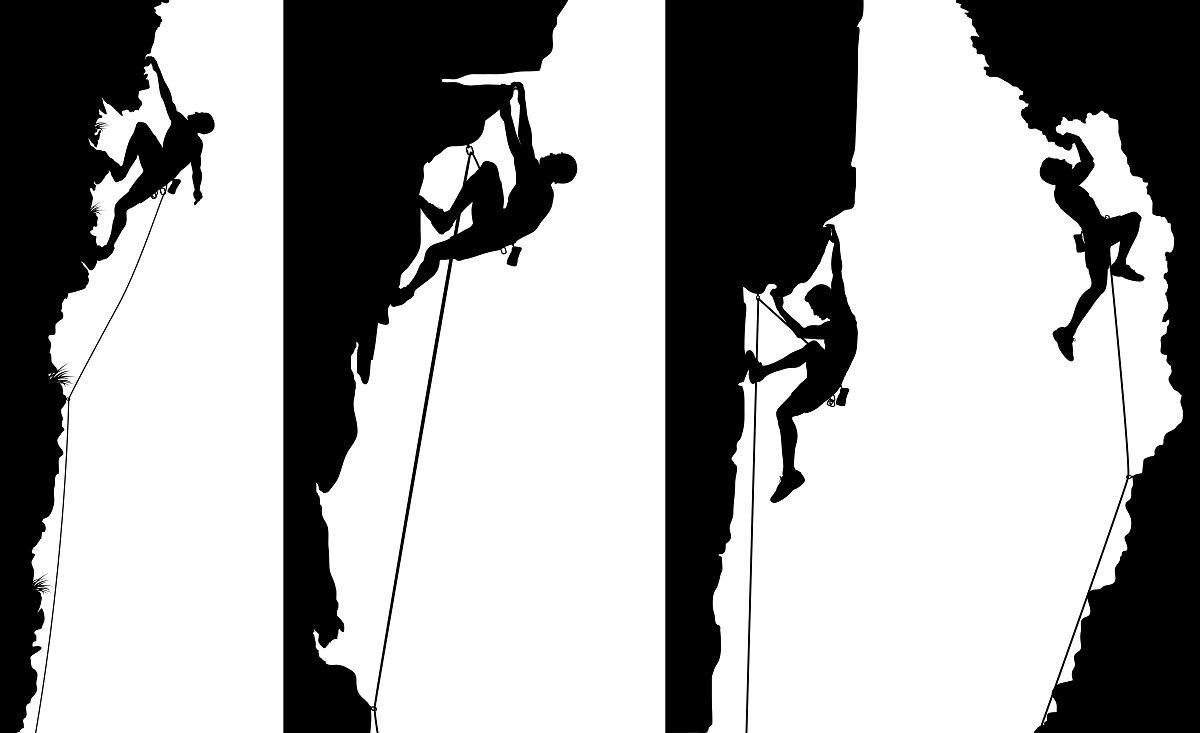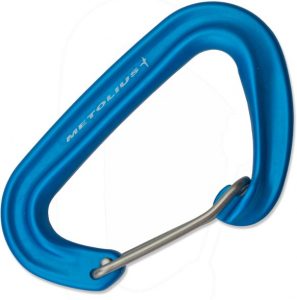Is your fear of falling keeping you safe or holding you back? In climbing, we are presented with potentially dangerous consequences each time we decide to climb up.
Whether it is your first day at the crag or your millionth, you’re bound to have that familiar feeling of fear and anxiety creep into your bones before you levitate into the vertical world. Since the day humankind first walked the earth, we have had this sense of fear. Sometimes our fear keeps us safe and prevents us from getting into a dangerous situation, but other times, our fear of falling holds us back from realizing our potential.

Sometimes we should listen to our fear.
A lesson on brain anatomy:
All five of our senses (sight, touch, taste, hearing, and smell) run through our Central Nervous System (CNS), essentially the highway for all information to our brains. All data from our senses first goes to the amygdala. The amygdala is a small part of the brain older than Dracula. Known as both the emotional brain and the reptilian brain, the amygdala is responsible for processing our emotions. At one point in history, the amygdala made up the entirety of the human brain.

Ever heard of flight or fight? This saying comes from the amygdala response. When met with a potentially dangerous situation, we respond rapidly through the amygdala. Evolution has granted us the frontal cortex brain, or rational thinking brain, where we can process and question the situation at hand.
Have you ever been startled in the night by the creaking of the door, the boogie man under your bed, or the witches outside your window staring in? Only to realize a few seconds later that it’s just your cat moving the door, your forgotten stuffed animal under the bed, or the tree branch tapping the window? You feel a sense of heightened awareness and fear, and then relax into processing the truth behind it. This is how we experience information hitting our amygdala and then being processed by our frontal cortex.
Even in the modern world, we cannot fully escape our reptilian brain. Because the pathways to the brain from the central nervous system are shorter to the amygdala than the frontal cortex, we still experience strong immediate emotional reactions such as fear, stress, or joy before we fully process our situation in the frontal cortex.
We have emotional reactions first. Then we think.
Brain research has shown us that we can delay our emotional reactions through mindfulness practices. Applied to climbing, these practices take many forms such as pre-planning, focused breathing, repetition … Today, we will engage with one of these mindful practices of pre-planning regarding the fear of falling. How do we identify whether our fears are rational, meaning we should listen to them, or irrational, meaning we need a way to push through them to success?
Fear of falling: rational or irrational?
Here we are going to outline a format of risk management to assess whether you are in a safe or unsafe zone to fall. The assessment works by answering the questions and looking objectively at your answers to see if you are prepared and ready to accept the risks and consequences of a particular route. Apply this to any goal route you may have.
Before you climb, assess the route:
- How difficult is the route?
- Where are the crux sections of the route?
- What is the quality of the protection for the route?
- Where is the hardest part to protect?
- Where are there hazards (ledges, blocks, weird stuff you may hit if you were to fall) on the route?
- Is the route in your comfort zone or challenge zone?

Each section of the route needs to be evaluated. In some cases, a fall only results in swinging through the air. In other cases, it may mean swinging back toward the wall. A fall as depicted on the right would mean landing directly on the rock.
Next, assess yourself, the climber:
- Have you climbed a route of this difficulty before?
- Are you confident you know how to do the crux or can do the cruxes safely?
- Have you done similar routes in the past? Can you pull from those experiences to help you on this route?
- Determine your personal fall zones and no-fall zones.*
- What have you done to prepare for this route?
*Personal Fall Zones: These are areas where you have identified that you are consciously willing to take a fall. Personal No Fall Zones: these are situations in which you are unwilling to take a fall. Are you willing to take a 20-foot clean fall on your gear? Are you willing to take that same fall if there are some protruding ledges and blocks? You must accept all the risk in your routes you are working to succeed, but don’t do so blindly. Use good judgment and use this risk assessment of the routes, yourself, and the fall zones to determine if you are ready.
View this post on Instagram
Re-assessing the situation while climbing:
If you’ve determined you will climb the route, now comes the hardest part: determining the consequence of a fall while climbing.
- What is the fall potential? Will you hit anything if you were to fall? Is it overhanging with nothing to hit, or vertical where you will end up on the wall? Are you on a traverse? If so, account for a pendulum fall, regardless of rope slack. Identify where you will be falling to acknowledge and accept the consequences. From here you can move forward.
- Where are the biggest committing sections or big fall potentials? Identify these before you leave the ground and accept the risk. Knowing where you will have to focus the most or relax the most for committing section before you go can help you prepare and feel what the experience will be like.
- Is it safe? A relative question depending on who you ask, but ask yourself this personally: Are you willing to take the risk? Yes or no?
Answering these questions before climbing can help you determine the objective risks and consequences of the route. This provides you with a clear black and white assessment of what you are about to do. From here, you must decide if you are willing to accept the risks in the route or not.
It’s always okay to not do a route if you don’t feel comfortable.
The cost of deciding not to continue is often only a $6 bail biner. Plus it’s a fun find for the next climber.

Summary: Fear of Falling
 Identifying when your fears are rational and irrational can help you safely determine when to go for it on a route or when to keep calm and back off. Looking objectively allows us to see the truth behind the mask of fear. If you are afraid to take the clean sport fall on a 30 degree overhanging wall where there are no hazards to hit because you are high enough, your fear is most likely irrational, and we can begin to work with more advanced techniques to eliminate this fear. Start with risk assessment to help you identify whether you want to accept the risk.
Identifying when your fears are rational and irrational can help you safely determine when to go for it on a route or when to keep calm and back off. Looking objectively allows us to see the truth behind the mask of fear. If you are afraid to take the clean sport fall on a 30 degree overhanging wall where there are no hazards to hit because you are high enough, your fear is most likely irrational, and we can begin to work with more advanced techniques to eliminate this fear. Start with risk assessment to help you identify whether you want to accept the risk.
This may be the hardest part: accepting.
Many climbers neglect to go through this fall analysis before undertaking a climb. Typically, this forces a climber to run a rapid and flawed assessment while on the wall. Most commonly, this process occurs during the crux. This wastes crucial energy and diverts the climber’s attention right when power and attention are needed the most. This reduces the chances of getting the send and increases the chances of creating a dangerous situation by dismissing a rational fear.
In our next article, I’ll share drills and practices you can work into your training to combat your fear of falling.
If you enjoyed this article then check out these other pieces:
- Overcoming the Fear of Falling — A Scientific Approach
- What I Learned Big Wall Climbing The Nose (in a Day) with Hans Florine
- Looking Back After One Year of Climbing — 10 Lessons Learned
- The Internets Best Rock Climbing Gear Sales








